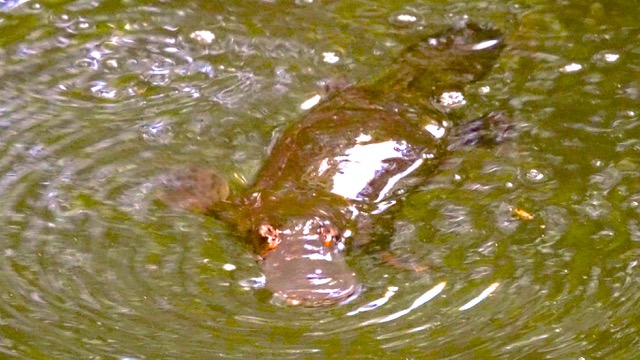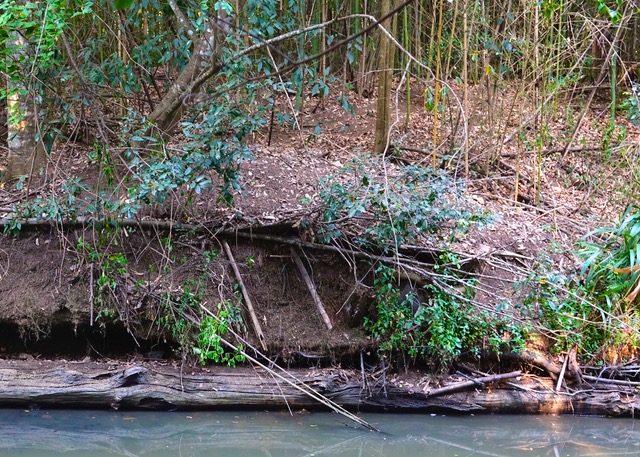We are privileged to live in an area which is so abundant in wildlife.
Each morning Ed Frazer checks out the activities of two platypus families living in Gold Creek. Their daily activities are fascinating and Ed has agreed to keep us posted from time to time with what these playful families are up to.
One of the females has two babies. Ed spotted them recently and noted that the young spent a lot of time almost out of the water, feeding under masses of dead leaves at the water’s edge.
Here is a great shot of one of the babies. Note it’s colouring. It’s much lighter than the mum who is practically black when she’s wet. Her babies are about half her size. You can clearly see the baby’s bill in the photo, which is very clean with no signs of wear.

The babies often play around near the den, diving and surfacing every 20 seconds or so and not staying on top for very long. This makes them very difficult to photograph! They swim in and out of the den frequently.
During one of Ed’s watches, one of the babies became a bit adventurous and swam about 50 metres up the pool, but the mum followed it quickly and they both made their way back!
Their burrow is only about 3 metres from Ed’s viewing point but unfortunately he can’t watch them going in and out because it’s on the opposite side of the creek and his view is somewhat obscured.
The shot below shows the den of the second platypus family. It is at the far right edge of the photo and Ed has watched the female enter a few times. She has a neighbour. There is a very large water dragon who lives the other end.
The water level is down about 300mm in the photo. The log is mostly under water when the creek is flowing. The dirty water is due to the platypus stirring up the mud when feeding.

Some interesting platypus facts: There’s a common misconception that the term for a baby platypus is “Puggle“. In fact, baby platypus do not have an identifying name: they are simply baby platypus!
The platypus is a species of primitive egg-laying mammals called monotremes. The female platypus burrows into the riverbank to lay one or two eggs. She keeps them between her rump and her tail to keep them warm.
After about 10 days, the eggs hatch and the little, bean-sized babies will nurse for three to four months. It is around the time of weaning that baby platypuses can swim on their own.
Keep an eye out for more news about the antics Ed’s platypus families!
Photos are copyright of Ed Frazer

